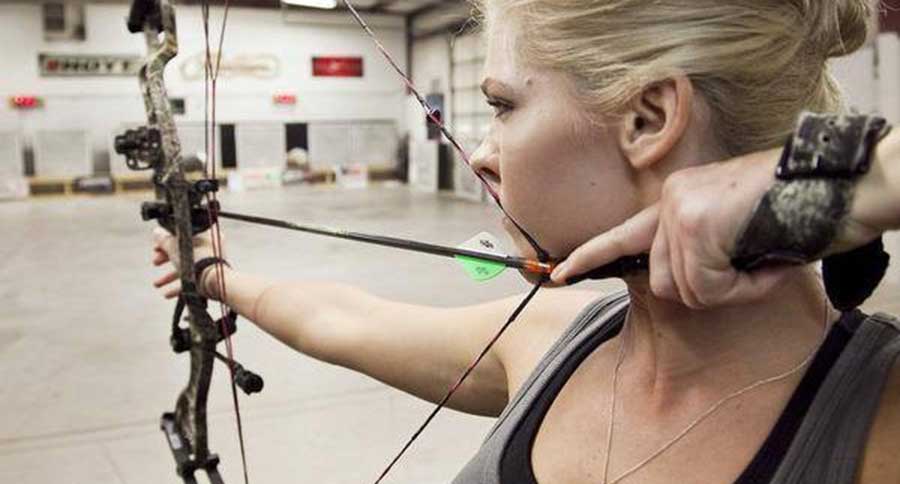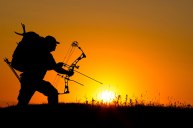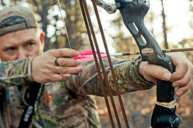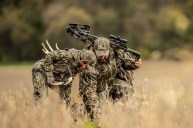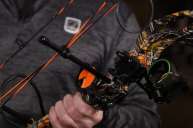Before you start setting up your hunting bow, take a look to make sure you have everything you need.
For those who have been hunting archery for years, it's simple. You get this, that and you're all set. For the beginner bowhunter, what exactly is this and that and how much or how many do you need? Well to make things simpler, we've put together the list of items you will need to get you started as a bowhunter.
Now of course outside of these items you will add other things like camouflage clothing, boots, possibly a tree stand and much more. So for the sake of just the bow and what you will need to set your bow up, we are going to focus on just that.
Here is the list of items you will need to ensure you have a complete bow setup for hunting this year.
Bow
There are many options on the market today and you can choose from a longbow to recurve to compound, but the let's assume you are looking to hunt with a compound this year. Bows range in prices and quality but with technology the way it is today, you can find very good bows for a good price range. Be mindful as some bows come as a package with all the accessories and some do not.
What separates good bows from great bows can vary. Weight, quality of the materials used and it's overall design. You must find a bow that can be set up to your size. The two most important things to remember when buying a bow is being able to draw the bow and have it be the correct length. If the draw weight is too much for you, you won't be able to use the bow. If the draw length is too short or too long you won't be consistent and you will never find shooting a bow to be comfortable. Know your draw weight and draw length before you purchase a bow.
Arrows
Of course, you can't have a bow and arrow without the arrow. Arrows range from real old school wooden to old school aluminum to most popular carbon fiber. Each has their own pros and cons, but more times than not you will find yourself shooting a carbon arrow in today's world. You can't just go out and use any arrow though as the arrow needs to be set up for your bow and your bow needs to be set up to you. This ultimately means that the arrow is set up directly to you, the shooter.
Arrows need to be cut to your length and the spine of the arrow needs to match that of your draw weight. There are charts available to ensure you get the correct arrow matched to you to ensure the best flight, but like all of your options when setting up your bow, always talk to a professional and ask for help at a pro shop to get you set up the right way. A good number of arrows to start is a half dozen but you can never have too many.
Arrow Rest
Assuming you have a bow that comes with the cams, cables and string, preferably one that is in good condition, not old, stretched or frayed, next you will need an arrow rest. You will have several options when it comes to the arrow rest. Without getting too involved in each category, you have a few basic options when it comes to arrow rests: Full capture like Trophy Ridge's Whisker Biscuit, Prong Style which tends to be used more for target archers, and the more popular, drop away rests. You will find more hunters using the full capture and drop away rests than any other style.
Bow Sights
A set of good quality sights is as important as any part of your bow. If there is any place to splurge a little in money, your sights and arrows I would recommend being a place to do so. Sights are what you use to mark your game to control your shot placement of the arrow. Cheaper sights, designed from plastics and other malleable materials, can move upon impact and bump.
For me, I travel often on planes, my bow can bounce around in my bow case or in the back of my truck. It also can hit a branch or two on it's way up and down the tree stand. Ensuring I have a quality sight is important so I know when my hitlist buck steps into range, I have no fear of equipment failure. Companies like Spot Hogg are known for quality designed sights and can ensure bumps, falls and drops keep you on target.
Peep Sights
This is a simple aperture, fabricated into your bow string, that allows you to hold close to your eye while you have the bow at full draw. To shoot you need three things: A target, a bow sight and a peep sight. The archer looks through the peep sight and chooses what pin from him bow sight to use (based on distance) and lines it up with the intended target. The peep sight ensures consistency and helps you remain on target at full draw.
Stabilizer
A stabilizer gets it's name from the job it performs within your bow, it helps stabilize. There are many options and I suggest finding one that helps you and your form. Most hunters will look to keep their stabilizers under 10" for versatility in a vast majority of weights. Be mindful of products that screw into the stabilizer port that are composed of mostly rubber or rubber-like material. These can help suppress vibration, but often times these can be gimmicky and not really help you with true stabilization.
Broadheads
In the world of bow hunting you will find no bigger argument than fixed vs. mechanical. If you ever see those words together, there is a good chance there is a conversation about broadheads. To kill an animal while hunting with a bow, you do so by cutting, not so much damage like a bullet. You will want to match the broadhead weight to match your draw weight and arrow size, but overall, mechanical or fixed it based on personal preference. No one can argue that the deadliest broadhead is an accurate one and as long as you are hitting your mark, you should never have a problem killing your game.
Arrow Quiver
Most hunters enter the woods or head out in the mountains with more than one arrow. The idea of carrying your arrows in one hand and shooting at the same time is very B.C. like, so today, you won't find many hunters without a quiver. A quiver's main purpose is to hold your arrows. There are a couple basic options, one that attaches to your bow or one that attaches to the shooter. Most common types of quivers attach directly to the bow and allow for quick access to your arrows if needed.
Release
A bow release is another tool that got its name from its purpose. A release is a tool that you pull the string back with and then you, for lack of descriptive terms, push a button and it releases the string. Releases are a great tool, especially with compound bows, because it helps with control and aids in pulling the bow string back. There are no rules against shooting a compound bow with just your fingers, however it's not preferred.
Basically, compound bows are usually set up today with "D" loops so you can connect your release to the loop, rather than the string itself, draw the bow back, then push a button to release the string. Releases come in a large variety but most of your releases are either thumb release or wrist releases. A thumb release fits in your hand and you push the releasing mechanism with your thumb. A wrist release wraps around your wrist and you push the releasing mechanism with your finger rather than your thumb. I shoot both types of releases and have uses for both, but for those just starting out I recommend going with a simple wrist release until you are comfortable and can find what you like.
Optional Items
Now that you have your bow ready for hunting, you may want to get a few extra things. These items aren't necessarily required but can make things better for you. A bow case is one item you should truly consider getting. With the cost of your entire setup, you would only be doing yourself a favor by protecting your assets. A hard bow case usually is more sustainable to dangerous situations, but any case is better than no case. I like the SKB Bow Case, as it not only compartmentalizes your equipment, but it has a rugged design and does a great job at protecting my expensive bow.
You may also want to look into getting yourself an archery target. If you have the room at home it could save you from having to run to the pro-shop to practice. It is also nice to have when traveling to ensure before each hunt that you are still on target.
A wrist sling is not necessarily required, but it can help you shoot properly. A bow sling allows the shooter to put their hand through before grabbing the riser grip. The sling falls on the shooters wrist allowing the shooter to have a more relaxed grip. This relaxed grip tends to increase accuracy while shooting.
Lastly, a range finder (check out the Nikon Arrow ID 3000 or 7000 VR)is always a good purchase for bow hunters. When I first started shooting archery, they didn't have range finders available for the consumer. We had to mark trees and rocks at certain distances from our tree stands to judge our shooting distances. We also had to pace out our steps during practice to mentally prepare ourselves for the hunt. Field judging is not easy, and range finders like the Arrow ID 7000 take all the guess work out. Thus, leaving the shooter with less things that can go wrong.
As mentioned, bows can come complete with everything in a package. Often times you will need to purchase your arrows and a release to complete the package. These package bows are often designed with "okay" accessories. You will many times save money, but have nothing more than an "okay" bow. Nonetheless, do what you and your budget can because hunting with any bow is better than not hunting at all.
Like what you see here? You can read more articles by Dustin Prievo here. Follow him and his hunting team, Top Pin Outdoors, on Twitter, Facebook and Instagram.
NEXT: 5 TIPS ON HOW TO DO DEER DRIVES WITH A BOW
WATCH
https://rumble.com/embed/u7gve.v3tr93/
